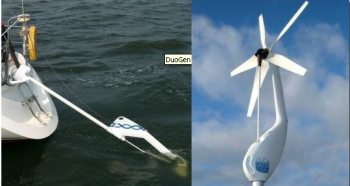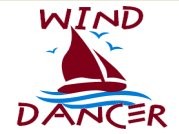
Wind Dancer
The Burns Family Voyage of Discovery
06 October 2009 | Vuda Point, Fiji
04 October 2009 | Vuda Point, Fiji
03 October 2009 | Vuda Point, Fiji
01 October 2009 | Vuda Point, Fiji
30 September 2009 | Vuda Point, Fiji
29 September 2009 | Vuda Point, Fiji
28 September 2009 | Vuda Point, Fiji
26 September 2009 | Vuda Point, Fiji
26 September 2009 | Vuda Point, Fiji
25 September 2009 | Vuda Point, Fiji
23 September 2009 | Vuda Point, Fiji
21 September 2009 | Vuda Point, Fiji
21 September 2009 | Vuda Point, Fiji
19 September 2009 | Vuda Point, Fiji
19 September 2009 | Vuda Point, Fiji
18 September 2009 | Vuda Point, Fiji
17 September 2009 | Vuda Point, Fiji
16 September 2009 | Vuda Point, Fiji
15 September 2009 | Vuda Point, Fiji
13 September 2009 | Musket Cove, Malolo Lailai Island, Fiji
Producin' the Juice
28 February 2007 | Home Port
11 Degrees, Clear, Wind NE 5 knots

There are so many things ashore that you just take for granted, like a relatively inexpensive, inexhaustible and reliable source of electrical power. When moving to self-sufficiency aboard a long distance cruising vessel, all bets are off. You now need to generate your own electricity most of the time (save the few days you're at a dock where AC power is available).
Generating the necessary juice to run your navionics, entertainment systems, fridge, autopilot, et al, is a real trick. There are several options: one, of course, is "shore power" -- but, unless you're dockside, you're going to need a really long cord. Another choice is the alternator on your diesel engine. But both of these alternatives seem to defeat the purpose of a sailboat.
And there are other factors involved. First, shore power is rarely available outside North American marinas, so being able to depend on it for a world cruise isn't feasible. However, we have ordered and will be installing a Xantrex "XC3012" battery charger which accepts the international range of AC power from 100-260 Volts @ 47-63 Hertz. So, in places where there are dockside electrical hook-ups, we'll be able use them no matter what country we're in.
Our main engine's over-sized alternator does a fine job of generation and battery charging, but its efficiency is tied directly to the amount of diesel we can carry. To keep the juice flowing on a long offshore passage would have required us to install much larger fuel tanks and spend a lot more on engine maintenance. That or shell-out the bucks for a genset (which is noisy and -- from most accounts and surveys we've run across -- quite unreliable).
Solar is another option, but the technology isn't as advanced as the others. Physical space requirements are high and, of course, you're limited to about five hours a day of production. We do carry a rollable solar panel that generates enough power to run our small GPS/chartplotter (but not much else) on an emergency basis.
So, why not just use the wind and water to provide your electrical needs the way it gives you mobility?
Okay, good idea. Armed with this concept I started off over a year ago doing the research. There are advantages to both wind and power generation aboard sailboats. "Wind generators" (windmills) sprout from the sterns of many cruising boats; water-driven impellers are towed behind myriad vessels as well. Wind generators are fairly efficient, out of the way and cause little drag, but are next to useless sailing downwind when the "apparent wind" over the boat is often near zero. Water generators, on the other hand, are extremely efficient producing more juice per knot of wind (from any direction) than a wind generator. But "water wheels" are in the way astern towed on long ropes that get tangled, and the impellers often jump out of the water or are torn off by sharks or debris.
The answer? How about a unit that does both wind and water electrical generation quite well. Enter the DuoGen. Take a look here. The UK-made DuoGen offers the best of both worlds and is easily interchangeable. When traveling in light airs, the unit is placed in water mode (on a shaft, not a towing line) so the amps keep flowing. When the wind pipes up, or you're at anchor or docked, you switch to air turbine mode for the best efficiency.
We're convinced. After scouring the web and cruising sites for a week, I was unable to unearth any serious negatives, other than the price. The DuoGen is spendy, but when you compare it to buying two separate units, or beefing up your engine and fuel tanks, or buying a genset, the math works.
So this afternoon, we placed our order for a new DuoGen-2 through Southeast Marine in Scappoose, Oregon, the US distributor. Our thanks to Southeast's Larry Janke who was extremely helpful in ordering the unit and its mounting equipment, spare parts kit, special charging regulator, et al. Delivery is probably a month or so out because some of the parts have to come from England. That should work out about right, though -- we can't start the actual installation until Wind Dancer's winter cover is removed. With a frigid 2-below this morning, that prospect is apparently a ways off yet.
Generating the necessary juice to run your navionics, entertainment systems, fridge, autopilot, et al, is a real trick. There are several options: one, of course, is "shore power" -- but, unless you're dockside, you're going to need a really long cord. Another choice is the alternator on your diesel engine. But both of these alternatives seem to defeat the purpose of a sailboat.
And there are other factors involved. First, shore power is rarely available outside North American marinas, so being able to depend on it for a world cruise isn't feasible. However, we have ordered and will be installing a Xantrex "XC3012" battery charger which accepts the international range of AC power from 100-260 Volts @ 47-63 Hertz. So, in places where there are dockside electrical hook-ups, we'll be able use them no matter what country we're in.
Our main engine's over-sized alternator does a fine job of generation and battery charging, but its efficiency is tied directly to the amount of diesel we can carry. To keep the juice flowing on a long offshore passage would have required us to install much larger fuel tanks and spend a lot more on engine maintenance. That or shell-out the bucks for a genset (which is noisy and -- from most accounts and surveys we've run across -- quite unreliable).
Solar is another option, but the technology isn't as advanced as the others. Physical space requirements are high and, of course, you're limited to about five hours a day of production. We do carry a rollable solar panel that generates enough power to run our small GPS/chartplotter (but not much else) on an emergency basis.
So, why not just use the wind and water to provide your electrical needs the way it gives you mobility?
Okay, good idea. Armed with this concept I started off over a year ago doing the research. There are advantages to both wind and power generation aboard sailboats. "Wind generators" (windmills) sprout from the sterns of many cruising boats; water-driven impellers are towed behind myriad vessels as well. Wind generators are fairly efficient, out of the way and cause little drag, but are next to useless sailing downwind when the "apparent wind" over the boat is often near zero. Water generators, on the other hand, are extremely efficient producing more juice per knot of wind (from any direction) than a wind generator. But "water wheels" are in the way astern towed on long ropes that get tangled, and the impellers often jump out of the water or are torn off by sharks or debris.
The answer? How about a unit that does both wind and water electrical generation quite well. Enter the DuoGen. Take a look here. The UK-made DuoGen offers the best of both worlds and is easily interchangeable. When traveling in light airs, the unit is placed in water mode (on a shaft, not a towing line) so the amps keep flowing. When the wind pipes up, or you're at anchor or docked, you switch to air turbine mode for the best efficiency.
We're convinced. After scouring the web and cruising sites for a week, I was unable to unearth any serious negatives, other than the price. The DuoGen is spendy, but when you compare it to buying two separate units, or beefing up your engine and fuel tanks, or buying a genset, the math works.
So this afternoon, we placed our order for a new DuoGen-2 through Southeast Marine in Scappoose, Oregon, the US distributor. Our thanks to Southeast's Larry Janke who was extremely helpful in ordering the unit and its mounting equipment, spare parts kit, special charging regulator, et al. Delivery is probably a month or so out because some of the parts have to come from England. That should work out about right, though -- we can't start the actual installation until Wind Dancer's winter cover is removed. With a frigid 2-below this morning, that prospect is apparently a ways off yet.
Comments
| Vessel Name: | Wind Dancer |
| Vessel Make/Model: | Catalina 36 Sloop |
| Hailing Port: | Juneau, Alaska |
| Crew: | Chris Burns |
| About: | 1st Mate Richelle Burns, 2nd Mate Grant Burns & 3rd Mate Grace Burns |
| Extra: | The Burns Family Voyage of Discovery |
Gallery not available
Wind Dancer

Who: Chris Burns
Port: Juneau, Alaska
No Links Added Yet

